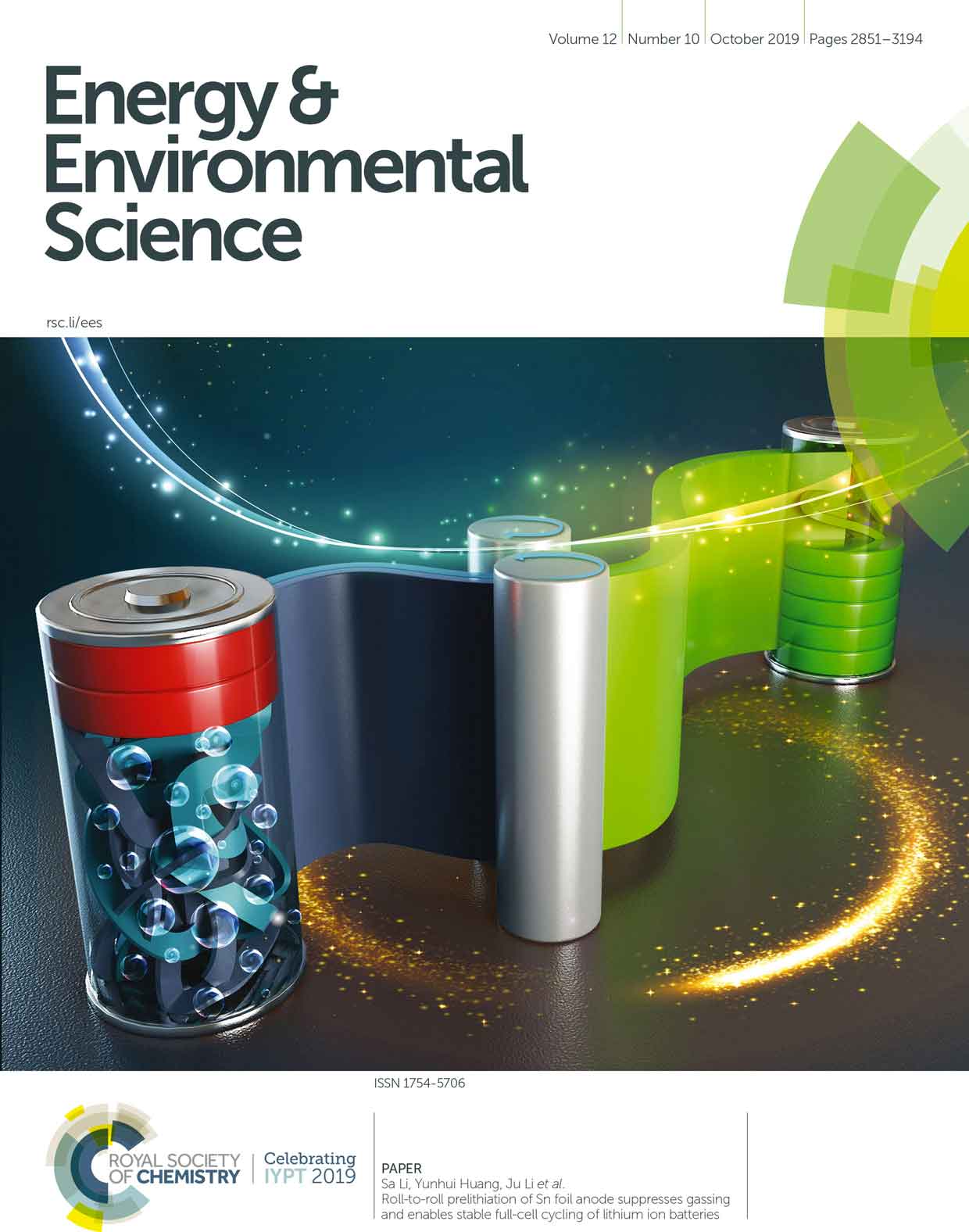




self-supporting tin foil is a high-volumetric-capacity alternative to the graphite lib anode; however, it shows an exceptionally low initial coulombic efficiency (10–20%), even lower than that of si and sno2 nanoparticles with >103× contact area with the electrolyte, which is quite strange. inspired by previous reports that tin catalyzes the decomposition of organic solvents, herein, we proved that bare sn indeed catalyzes electrolyte decomposition at an intermediate voltage to generate gas bubbles and leidenfrost films, which cut off the transport of lithium ions and prevent the formation of an adherent sei. however, when the absolute potential is below 1 v (vs. li/li ), it simultaneously promotes the formation of a solid sei and mechanical adherence, which can in turn suppress future gassing. therefore, we developed a roll-to-roll mechanical prelithiation process for tin foil, which lowers its absolute potential before contacting the electrolyte, promotes adherent passivation film formation, and greatly improves its coulombic efficiency and capacity retention so that it can perform well in full cells. also, the striking air stability of the lixsn foil makes it much easier to handle than the bare li metal anode. our study provides vital new insights into why self-supporting metallic anodes do not appear to work in libs and develops an effective mitigation strategy by cheap and scalable metallurgical prelithiation, which is also applicable to other metallic alloy anode materials.



微信扫一扫,加设计师好友
17621261539
周一至周五8:30-18:00

提升“研值”

工作人员将在1个小时内联系您。


